CIGem News Summer 2009 - ISSN 0846-3611 GEMMOLOGY CANADA - Wolf Kuehn, F.G.G., F.G.A., Editor
The Quarterly Newsletter of the Canadian Institute of Gemmology (C.I.G.)
New Gemstone Treatments - A Coming Crisis
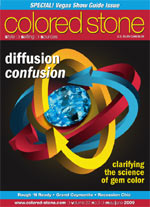 Colored Stone magazine has published the full version of Joel Arem's article which appeared in the May-June 2009 edition under the title "Ending Diffusion Confusion". The author attempts "to present a theoretical basis for understanding the scientific issues underlying the observations of treatment processes that are plaguing the current gemstone industry". Proper descriptive terminology and awareness of internationally accepted definitions for diffusion are necessary when discussing new observations. Joel Arem states "All of science is a history of proposing, testing and discarding theories, and progress is incremental". I could not agree more!
Colored Stone magazine has published the full version of Joel Arem's article which appeared in the May-June 2009 edition under the title "Ending Diffusion Confusion". The author attempts "to present a theoretical basis for understanding the scientific issues underlying the observations of treatment processes that are plaguing the current gemstone industry". Proper descriptive terminology and awareness of internationally accepted definitions for diffusion are necessary when discussing new observations. Joel Arem states "All of science is a history of proposing, testing and discarding theories, and progress is incremental". I could not agree more!
The "science" of gemmology of the past has been mostly observational and the increasing number of "scientific" papers about "Paraiba" tourmaline for example attest to that. In most cases they offer a conclusion without further proof and lack the requirements of true peer-reviewed experimental gemmology based on solid research methodology.
I hope that Joel Arem's paper is being read by every gemmologist; it is an excellent educational contribution for which I am very thankful. Read it here.
Jeff R Graham RIP
I am very sad to hear of Jeff Graham's sudden passing. I met him personally in Tucson many years ago and was impressed by his integrity and willingness to help. I always recommend his web-pages Just Ask Jeff to my students and hope that his website will continue and serve as a wealth of information. Jeff was well known outside the faceting community and his publications about facetting were well received. Gemmology has lost a great champion.
Andesine News
It seems that the Andesine saga never will end. It is now before the courts and I hope that eventually the players will be held responsible (if that is possible at all). At the same time the TV shopping channels and e-Bay sellers continue selling the material undisclosed to unaware consumers. Add to that people from within the industry who are downplaying the damage this scandal has caused in particular to the Oregon Sunstone miners.
A positive contribution to this debacle is the report about the recent ISG (International School of Gemology) field trip to the Oregon sunstone mines; unfortunately I was unable to participate due to an already planned trip to Ecuador; read: Part I - a visit to the mines and Part III: Real Plush Oregon Sunstone.
Over the years I have visited many gem mines in Brazil, Sri Lanka, Thailand, Cambodia, Colombia, Australia, etc. and most mine owners like the ones at the Spectrum and Dust Devil Mine at Plush, Oregon were most welcoming. There was no secrecy because there was nothing to hide for whatever reason.
This fact makes me even more suspicious about the claims made by certain players in the Andesine scandal. To this day I have been waiting for evidence from an independent party confirming that the Tibetan Andesine mine ever produced any of the red Andesine sold in the markets.
Interestingly some of the original websites such as the "Tibetan Sunstone" website are not accessible anymore.
Gemlab Research &Technology
Gemlab Research & Technology is a subsidiary of the Canadian Institute of Gemmology (C.I.G.); it conducts independent research in gemmology related areas.
Early projects included colour gem grading with spectrometers and gem identification techniques using an immersion-scope. More recently portable fibre-optics spectrometers and LED light sources have expanded traditional gem testing procedures; they will become important tools for the practising gemmologist in the future.
The Canadian Institute of Gemmology is in the forefront of providing professional development courses to its graduate students and members of the jewellery trade; innovative delivery methods are being studied and incorporated.
Over the years cost for electronic equipment has dropped considerably and UV-VIS-NIR spectrometers with software are now available to experienced gemmologists using a note-book computer.
We have been testing our portable OceanOptics spectrometers in the UV-VIS (200 - 1100 nm) and NIR (850 - 2500 nm) range in the following study areas:
Absorption and transmission spectroscopy with OceanOptics USB 2000+ miniature spectrometer for gemstone identification such as detection of presence of metals, dye, etc to determine origin, nature and possible treatments.Luminescence spectroscopy using an OceanOptics NIR spectrometer and UV-LED illumination for detection of treatments, fillers, etc. used to enhance gemstones.Possible use of low powered blue lasers for microscopic tomography studiesNew equipment in our research lab:
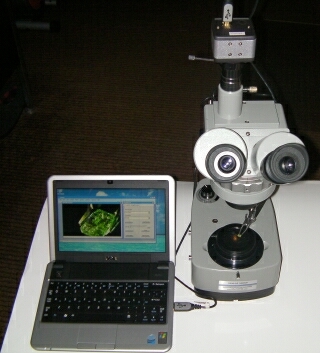 We have added a Tucsen 5.0 MP Color CMOS Camera (2560x1920 pixels) to our trinocular KYOWA microscope connected to a laptop computer which is also used with our Ocean Optics spectrometers.
We have added a Tucsen 5.0 MP Color CMOS Camera (2560x1920 pixels) to our trinocular KYOWA microscope connected to a laptop computer which is also used with our Ocean Optics spectrometers.
The new Tucsen Tsview software provides a user-friendly platform to control the camera, view and edit images(including fluorescence analysis).
The software also allows real-time sharing of images over the Internet. C.I.G. students taking course # 150 Gem Identification I can now be assisted through MSN Messenger or SKYPE in their course work.
Our Ocean Optics USB2000+UV-VIS Miniature Fiber Optic Spectrometer using two different light sources:
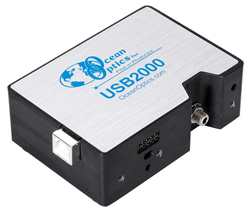 The USB2000 couples a low-cost, high-performance 2048-element linear CCD-array detector with an optical bench that's small enough to fit into the palm of your hand -- the same detector and optical bench that have provided superior performance to the users of our 15,000 systems out in the field.
The USB2000 couples a low-cost, high-performance 2048-element linear CCD-array detector with an optical bench that's small enough to fit into the palm of your hand -- the same detector and optical bench that have provided superior performance to the users of our 15,000 systems out in the field.
The USB2000 also works the same way as other Ocean Optics spectrometers in that it accepts light energy transmitted through single-strand optical fiber and disperses it via a fixed grating across the linear CCD array detector, which is responsive from 200-850 nm.
Purchase price is US$ 3,061 and $ 253 for the optical fiber assemblies.

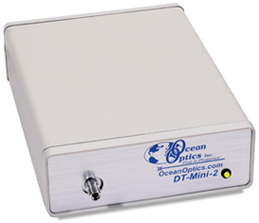 The LS-1 Tungsten Halogen Light Source is a versatile white-light source optimized for the VIS-NIR (360-2500 nm). The lamp offers high color temperature, highly efficient output and long life in a compact, economical package. Purchase price is US$ 577.
The LS-1 Tungsten Halogen Light Source is a versatile white-light source optimized for the VIS-NIR (360-2500 nm). The lamp offers high color temperature, highly efficient output and long life in a compact, economical package. Purchase price is US$ 577.
The DT-MINI Deuterium Tungsten Halogen Light Sources combine the continuous spectrum of an RF-excited deuterium UV light source and a tungsten halogen VIS-NIR light source in a single optical path. The combined-spectrum sources produce stable spectral output from ~200-2000 nm in a compact package. Purchase price is US$ 1,732.
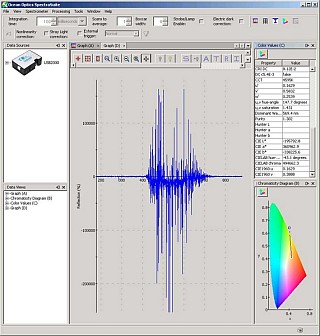
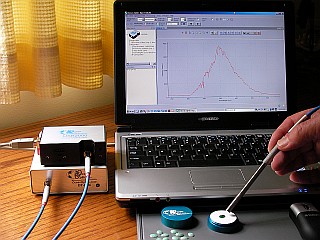 Initially we were using our portable Ocean Optics USB2000+ Miniature Fiber Optic Spectrometer for colour grading projects.
Initially we were using our portable Ocean Optics USB2000+ Miniature Fiber Optic Spectrometer for colour grading projects.
The new SpectraSuite, the first modular, OS-independent spectroscopy software platform runs on Windows, Linux and MacOS based systems.
For fluorescence studies and more sophisticated gem identification projects we have acquired an Ocean Optics NIR 256-2.5 spectrometer with high-power halogen light source and filters; this allows us to conduct testing in the entire 200 - 2500 nm (UV-VIS-NIR) range.
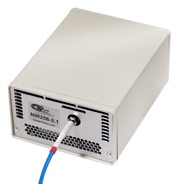 The OceanOptics NR256-2.5 is a less costly, less complex alternative to FT-IR and comparable technologies and acquires data as fast as 10 milliseconds. The spectrometer has an effective range of 850-2500 (enhanced for 2100-2500 nm region).
The OceanOptics NR256-2.5 is a less costly, less complex alternative to FT-IR and comparable technologies and acquires data as fast as 10 milliseconds. The spectrometer has an effective range of 850-2500 (enhanced for 2100-2500 nm region).
It features a temperature-regulated InGaAs detector array, which is internally cooled for optimum signal-to-noise and sensitivity.
Purchase price for the OceanOptics NIR 256-2.5 spectroscope is US$ 25,405.
New Treatments
Fillers are being used in a wider variety of gemstones than ever before. Remember "fracture filled" diamonds (Yehuda), opticon treated emeralds (Gematrat), different types of treatment for jadeite, glass filling of rubies and now topaz, tourmaline and others filled with some type of resin. The latter material has been the filler of choice for many years. I remember a visit to a small factory where spheres and other items were made from quartz and a variety of gem materials. Tubes of opticon were clearly visible at the benches; I could observe workers using razor blades smoothening out the treated surfaces.
The detection of filler materials and dyes will be a priority in our studies with the NIR spectrometer. We will also study fluorescence reactions under LW and SW ultraviolet light. Initial reports will be published soon.
Fox UV LEDs
 We have started mutual cooperation with the Fox Group Inc. - the manufacturer of new UV-LEDs (350 nm and 360 nm, 250 nm in development); they will send us their newest FoxUV TM LEDs for luminescence testing on gemstones.
We have started mutual cooperation with the Fox Group Inc. - the manufacturer of new UV-LEDs (350 nm and 360 nm, 250 nm in development); they will send us their newest FoxUV TM LEDs for luminescence testing on gemstones.
This is the continuation of work presented during the GIT 2008 conference in Bangkok. See CIGem NewsJanuary/February 2009 and my contribution "UV-LEDs - setting a new standard for fluorescence observations", View/Download the poster here( 121 KB). It is encouraging to see a few labs indicating the wavelength of the excitation source in their more recent fluorescence studies.
121 KB). It is encouraging to see a few labs indicating the wavelength of the excitation source in their more recent fluorescence studies.
Accredited Gemmologist (C.I.G.) Professional Development Program
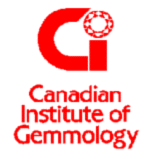 For some time we have explored venues to make advanced training in gemmology available to gemmologists holding diplomas from other institutions.
For some time we have explored venues to make advanced training in gemmology available to gemmologists holding diplomas from other institutions.
The use of advanced instrumentation in a gemmological lab requires additional training which is not covered in the traditional curriculas of gemmology programs.
We are presently working on a professional development program which can be taken as a self-guided study. Other possibilities are currently being discussed with a polytechnical post-secondary institution.
We will have more information in our fall newsletter.
Vancouver C.I.G. courses and workshops - Fall 2009
Introduction to Gemstones - PLEASE REGISTER BY September 9 - More info here
Course 110-2 (Introduction to Gemstones), Wed, Sept 16 - Nov 18, 6:15 - 9:00 p.m.(10 sessions, Vancouver) $ 695 includes text-books and exam fee (no GST)This is a general interest course introducing the basic identifying features of all important gems, including their appearance, special physical and optical characteristics, their occurrence and value factors. Also included is an introduction to diamond and colour gem grading, the use of gemmological instruments to aid identification.
Course Content: 1. Nature of Gemstones (1), Diamonds and Corundum 2. Nature of Gemstones (2), Beryl and organic gems 3. Crystal Structure and Origin of Gems, Opal, Topaz and Jade 4. Gem Cutting and Care, Garnet, Quartz and Spodumene 5.Gemstone Identification (1), Tourmaline, Chrysoberyl and others 6. Gemstone Identification (2), Diamond Grading (1) 7. Gemstone Economics, Markets and Values, Diamond Grading (2) 8. Colour Gem Grading and Appraisals 9. Gem Enhancement and Synthetic Gems 10. Review, Jewellery Manufacture, History and Fashion
Introduction to Diamonds -PLEASE REGISTER BY October 10- More info here
Course 130-3 (Introduction to Diamonds), Fri, October 23, 6:15 - 9:00 p.m., Sat/Sun, October 24/25, 10 a.m - 4:30 p.m. (weekend class, Vancouver)
$ 495 includes text-book and exam fee (no GST), study materials with binder will be shipped upon registrationIn this course you will learn everything you need to know about diamonds. Sell more and answer customer questions with confidence. Introduction to diamond grading and jewellery fashion.
Course Content: 1. Diamonds. How they are created. 2. The Beauty of Diamonds 3. Weight and Colour of Diamonds. 4. Judging the Clarity of Diamonds. 5. Judging the Cut of Diamonds. 6. Diamond or Imitation? Gold, Platinum. 7. Choosing an Appropriate Style. 8. Choosing a Diamond Ring, Judging Craftmanship.
Pearls, Opal and Jade - PLEASE REGISTER BY October 30- More info here
Course 160-2 Fri, November 6, 6:15 - 9:00 p.m., Sat/Sun, November 7/8, 10 a.m - 4:30 p.m. (weekend class, Vancouver)
$ 495 includes text-book and exam fee (no GST), study materials with binder will be shipped upon registrationIn this course you will learn about pearl types and shapes, how to judge luster, thickness, colour and size of pearls. The identification and evaluation of South Sea, black and freshwater pearls and other organic gems are also covered. There will be one session on opal and its evaluation. Another session will cover the jades - oriental jadeite and nephrite.
For more information about Vancouver courses go here.
Past issues of C.I.Gem News: Click on the edition you want to read: December 2008 - January/February 2009 - Special GIT 2008 edition - Spring 2009. The next newsletter will be published in September 23, 2009.
December 2008 - January/February 2009 - Special GIT 2008 edition - Spring 2009. The next newsletter will be published in September 23, 2009.
To subscribe other interested people to CIGem News send an email to CIGem News
We will never use our subscriber e-mail addresses for anything but our newsletter. To UNSUBSCRIBE to our newsletter, click HERE
Unless indicated otherwise images © 2009 J. Wolf Kuehn and
Canadian Institute of Gemmology. Users may View/Download images for their own private, non-commercial
use.
The articles in CIGem News express the opinions of the editor and do not necessarily reflect those of the Canadian Institute of Gemmology (C.I.G.). The included links are provided for educational purposes. Copyright and content responsibility remains with the linked organization and do not represent any endorsement by the author.
 Colored Stone magazine has published the full version of Joel Arem's article which appeared in the May-June 2009 edition under the title "Ending Diffusion Confusion". The author attempts "to present a theoretical basis for understanding the scientific issues underlying the observations of treatment processes that are plaguing the current gemstone industry". Proper descriptive terminology and awareness of internationally accepted definitions for diffusion are necessary when discussing new observations. Joel Arem states "All of science is a history of proposing, testing and discarding theories, and progress is incremental". I could not agree more!
Colored Stone magazine has published the full version of Joel Arem's article which appeared in the May-June 2009 edition under the title "Ending Diffusion Confusion". The author attempts "to present a theoretical basis for understanding the scientific issues underlying the observations of treatment processes that are plaguing the current gemstone industry". Proper descriptive terminology and awareness of internationally accepted definitions for diffusion are necessary when discussing new observations. Joel Arem states "All of science is a history of proposing, testing and discarding theories, and progress is incremental". I could not agree more! We have added a Tucsen 5.0 MP Color CMOS Camera (2560x1920 pixels) to our trinocular KYOWA microscope connected to a laptop computer which is also used with our Ocean Optics spectrometers.
We have added a Tucsen 5.0 MP Color CMOS Camera (2560x1920 pixels) to our trinocular KYOWA microscope connected to a laptop computer which is also used with our Ocean Optics spectrometers.  The USB2000 couples a low-cost, high-performance 2048-element linear CCD-array detector with an optical bench that's small enough to fit into the palm of your hand -- the same detector and optical bench that have provided superior performance to the users of our 15,000 systems out in the field.
The USB2000 couples a low-cost, high-performance 2048-element linear CCD-array detector with an optical bench that's small enough to fit into the palm of your hand -- the same detector and optical bench that have provided superior performance to the users of our 15,000 systems out in the field.
 The LS-1 Tungsten Halogen Light Source is a versatile white-light source optimized for the VIS-NIR (360-2500 nm). The lamp offers high color temperature, highly efficient output and long life in a compact, economical package. Purchase price is US$ 577.
The LS-1 Tungsten Halogen Light Source is a versatile white-light source optimized for the VIS-NIR (360-2500 nm). The lamp offers high color temperature, highly efficient output and long life in a compact, economical package. Purchase price is US$ 577. 
 Initially we were using our portable Ocean Optics USB2000+ Miniature Fiber Optic Spectrometer for colour grading projects.
Initially we were using our portable Ocean Optics USB2000+ Miniature Fiber Optic Spectrometer for colour grading projects.  The OceanOptics NR256-2.5 is a less costly, less complex alternative to FT-IR and comparable technologies and acquires data as fast as 10 milliseconds. The spectrometer has an effective range of 850-2500 (enhanced for 2100-2500 nm region).
The OceanOptics NR256-2.5 is a less costly, less complex alternative to FT-IR and comparable technologies and acquires data as fast as 10 milliseconds. The spectrometer has an effective range of 850-2500 (enhanced for 2100-2500 nm region). We have started mutual cooperation with the
We have started mutual cooperation with the  For some time we have explored venues to make advanced training in gemmology available to gemmologists holding diplomas from other institutions.
For some time we have explored venues to make advanced training in gemmology available to gemmologists holding diplomas from other institutions.